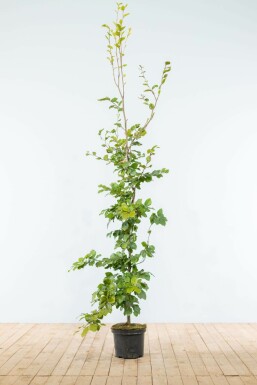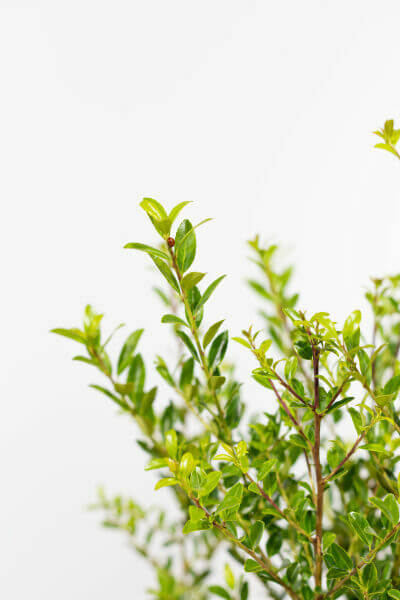Hedge Plants For Seaside Gardens
Hedge Plants For Seaside Gardens
Blog Article
Hedge Plants For Creative Landscaping
Enhance your garden's attraction with rich hedge varieties such as Yew (Taxus), Thuja, Laurel, Photinia, and Bamboo, commemorated for their structural stability and environmental advantages.
Yew and Thuja provide evergreen coverage and winter season strength, while Laurel provides rapid development and broad, aromatic leaves.
Photinia adds seasonal appeal with its vibrant red foliage, and Bamboo lends a low-maintenance, peaceful atmosphere.
These hedges improve air quality, minimize sound, and create tranquil, private areas.
Correct planting, spacing, and maintenance guarantee energetic development and ecological harmony.
Check out how these lavish ranges can elevate your garden's beauty and well-being.
Secret Takeaways
Change Your Garden With Lush Hedge Ranges
- Select Yew for its dense, evergreen growth and unrivaled durability.
- Go with Laurel for its fast growth and broad leaves, ensuring quick privacy.
- Select Photinia for its lively seasonal foliage, which turns a striking dark red.
- Make use of Bamboo for a low-maintenance, winter-hardy hedge with visual appeal.
- Area plants 2-3 per meter and prune regularly for optimal growth and health.
Popular Hedge Plants
When transforming a garden with lush hedge varieties, it's important to think about popular hedge plants such as Yew, Thuja, Laurel, and Photinia due to their distinct attributes and advantages.
Yew (Taxus) is extremely respected for its durability and thick, green growth, making it a prime choice for withstanding landscapes.
Thuja is noted for its evergreen foliage and robust winter resilience.
Photinia includes seasonal vibrancy with red leaves that darken gradually, developing vibrant visual appeal.
Laurel provides rapid growth and fragrant, broad leaves, ideal for quick privacy.
In Addition, Bamboo is an excellent option for atmosphere, providing a low-maintenance, winter-hardy choice that enhances the garden's visual with its classy, swaying walking sticks.
These selections cater to a range of horticultural requirements and choices.
Advantages of Garden Hedges
Garden hedges use a multitude of advantages, making them an important addition to any landscape. These natural barriers are economical to implement and provide substantial wind security, improving air circulation and adding to noise decrease. The thick foliage of hedges like Thuja and Beech ensures personal privacy by obstructing visibility, developing a peaceful and secluded environment.
Hedges likewise play an important role in microclimate policy, providing a stable environment that cultivates plant growth and decreases temperature fluctuations. Their complex leaf structures filter pollutants, enhancing air quality and adding to a healthier garden environment.
Furthermore, hedges stand out in noise decrease, soaking up and deflecting sound waves to lower ambient noise levels. This double functionality of providing both visual and acoustic privacy boosts the general tranquility and visual appeal of any garden.
Planting and Upkeep Tips
For a successful hedge, meticulous preparation of the planting location is important. Ensure the soil has correct pH and drainage to support strong root development.
Area the plants properly for the chosen species. Water the hedge regularly throughout its initial growth stage, changing as needed with seasonal changes.
Execute a organized bug control and disease prevention technique, utilizing chemical or natural treatments when necessary. Routinely examine for aphids, termites, and fungal infections.
Apply mulch to maintain wetness and reduce weeds. Seasonal pruning promotes dense development and air blood circulation, necessary for plant health.
Following these guidelines will help you cultivate a vibrant, well-kept hedge that improves the appeal of your garden.
Spacing and Cutting Standards
Spacing and Cutting Standards
Correct spacing and cutting are vital for cultivating healthy, aesthetically appealing hedges. Appropriate spacing guarantees each plant receives adequate nutrients, light, and airflow.
Follow these standards for optimum hedge upkeep:
- Spacing: Position hedge plants 2-3 plants per meter to motivate robust development.
- Pruning Methods: Routine pruning is vital for preserving preferred hedge height and shape. Trim new growth in summer and cut back older wood throughout winter.
- Seasonal Care: Adjust trimming schedules and methods according to seasonal requirements to make sure plant health.
- Hedge Height: Frequently screen and trim to maintain the desired hedge height and attain consistent looks.
Adhering to these actions will guarantee your hedge prospers, improving both the appeal and functionality of your garden.
Picking the Right Hedge
Selecting the Right Hedge
Selecting the proper hedge includes assessing aspects such as fully grown height, foliage density, and ecological durability. Successful hedge plant choice requires comprehending each species' development characteristics and site-specific flexibility.
For instance, Yew (Taxus) offers exceptional longevity and thick development, while Thuja is significant for its winter strength. Furthermore, thinking about maintenance requirements is vital; fast-growing species like Laurel or Privet need regular cutting, whereas low-maintenance options like Bamboo or Ivy may be more suitable for those looking for minimal maintenance.
Environmental aspects such as soil type, light availability, and wetness conditions ought to likewise guide the selection procedure. This careful method ensures the selected hedges will grow, providing both functional and aesthetic advantages to the garden landscape.
Delivery and Planting Recommendations
To guarantee your hedge plants thrive, they ought to be provided by specialized carriers and planted quickly upon arrival.
Follow these vital actions for successful planting:
- Soil Preparation: Enhance the soil with natural matter to enhance drain and nutrient content.
- Planting Depth: Produce a trench twice the width and equivalent to the depth of the root ball.
- Watering Strategies: Water thoroughly after planting, keeping the soil consistently moist but not filled.
- Mulching: Use a layer of mulch to maintain wetness and suppress weeds.
Customer Support and Service
Provided the important function of prompt help in horticultural pursuits, our consumer assistance group is readily available six days a week through telephone, email, and social media to offer expert guidance and quickly deal with any concerns. Their commitment to quick response times ensures customer complete satisfaction by dealing with inquiries associated with plant health, ideal planting methods, and maintenance schedules.

-------------------
6 days a week
Within two days
This thorough support system, enhanced by a stellar 9.3/ 10 client score, highlights our dedication to boosting the gardening experience for every client.
Frequently Asked Questions
How Long Does It Take for Hedge Plants to Establish?
Hedge plants typically require one to three years to become completely developed, with the precise duration varying by species and growing conditions.
Efficient care during this vital duration is vital for robust development. Consistent watering, watchful weed control, and suitable fertilizer application are critical in promoting strong root development.
For example, fast-growing species like Laurel might develop faster, while slower-growing ranges such as Yew may take longer. Persistent maintenance accelerates the establishment procedure, leading to thick and healthy hedges.
What Are the Best Hedge Plants for Privacy?
The concern of the very best hedge plants for personal privacy includes assessing evergreen and deciduous options.
Evergreen hedges like Thuja, Laurel, and Cypress provide year-round protection, guaranteeing continuous privacy.
On the other hand, deciduous hedges such as Beech provide seasonal privacy, shedding leaves in cooler months.
Secret maintenance tips for personal privacy hedges include regular cutting, fertilizing in spring, and appropriate spacing-- typically 2 to 3 plants per meter.
In addition, consistent watering and diligent weed elimination are essential for promoting healthy, thick development.
Can Hedge Plants Attract Wildlife to My Garden?
Yes, hedge plants can bring in wildlife to your garden by offering essential advantages like shelter, food, and nesting sites, therefore improving regional biodiversity. For instance, yew, holly, and laurel are excellent for drawing in birds, while ivy supports a variety of bugs.
Nevertheless, it is very important to keep in mind that there are some drawbacks, such as increased upkeep to manage insects and routine upkeep. Thoroughly selecting and preserving hedge ranges can help stabilize these advantages and drawbacks, ultimately promoting a vibrant and sustainable environment in your garden.
Exist Any Flowering Hedge Plants Available?
Yes, there are flowering hedge plants readily available that can enhance the charm of your garden.
For instance, Elaeagnus, likewise called Olive Willow, produces fragrant white flowers in the fall, including a touch of sophistication.
Photinia, another popular choice, showcases dynamic red leaves that develop into an abundant green, creating a dynamic visual impact throughout the seasons.
To guarantee these plants grow, it's important to practice proper pruning methods and seasonal upkeep, such as cutting brand-new development in the summer and cutting back in the winter.
These steps will help preserve the health and visual appeal of your blooming hedges.
How Do I Avoid Bugs in My Hedge Plants?
To avoid bugs in hedge plants, use natural bug control methods and keep proper hedge care. Introduce useful bugs like ladybugs, which victimize damaging bugs, to develop a well balanced community.
Routinely examine your hedges for signs of invasion and immediately eliminate any afflicted parts to prevent the spread. Guarantee the health of your Article source hedges by applying balanced fertilizers and providing appropriate water.
Make use of mulching to maintain soil moisture and appropriate spacing to reduce plant stress and promote robust development. These practices jointly help in reducing pest concerns and keeping a healthy hedge.
Conclusion
In essence, selecting the best hedge varieties such as Yew, Thuja, and Laurel can change any garden into a relaxing haven. These plants provide year-round plant, improve aesthetic appeal, and deal useful benefits like sound decrease and wind protection.
Proper planting strategies, accurate spacing, consistent watering, and seasonal cutting are important for optimal development.
Trustworthy delivery services and expert client support make sure a seamless experience from purchase to planting, making it easier than ever to raise your outdoor area.
Garden hedges offer a plethora of benefits, making them an important addition to any landscape. These natural barriers are economical to implement and offer significant wind defense, improving air circulation and contributing to sound reduction. The dense foliage of hedges like Thuja and Beech makes sure privacy by blocking exposure, producing a remote and peaceful environment.

Pruning Strategies: Routine pruning is vital for preserving desired hedge height and shape. Cut brand-new growth in summer season and cut back older wood throughout winter.
Report this page